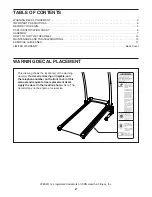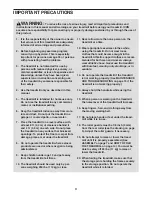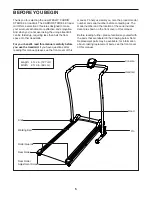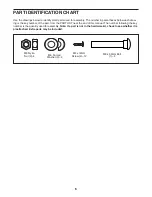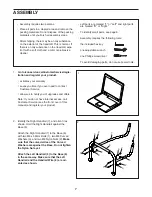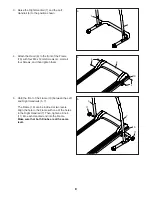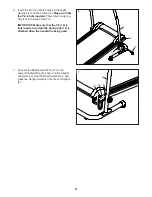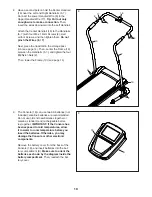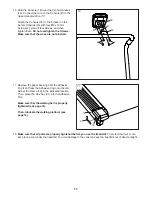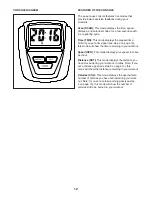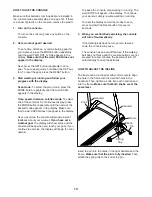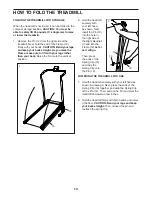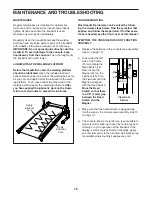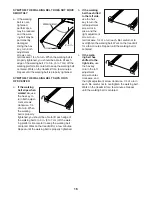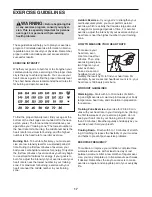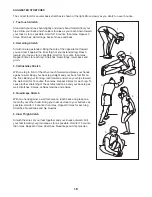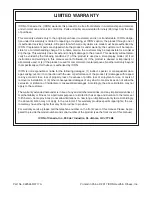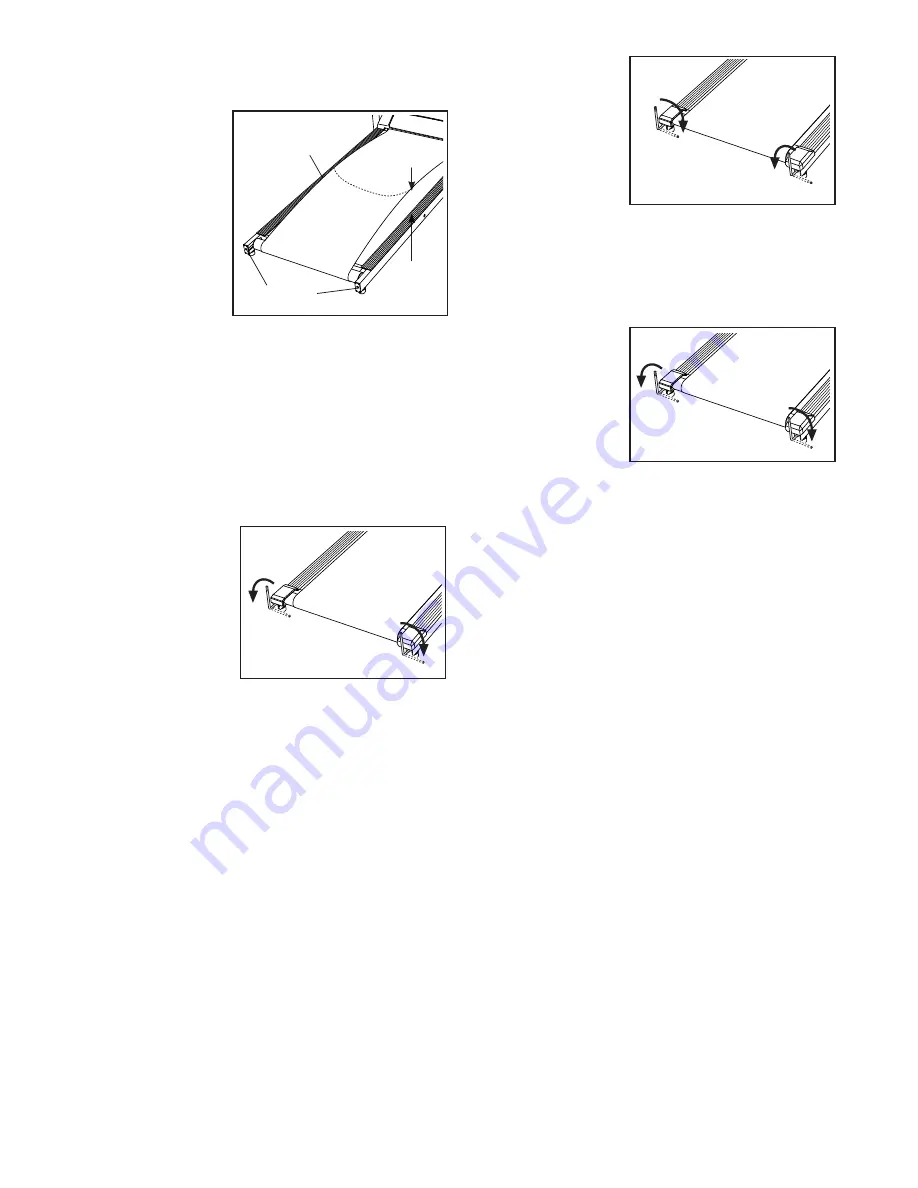
16
SYMPTOM: THE WALKING BELT DOES NOT MOVE
SMOOTHLY
a. If the walking
belt is over-
tightened,
performance
may be reduced
and the walk-
ing belt may be
permanently
damaged.
Using the hex
key, turn both
adjustment
screws coun-
terclockwise 1/4 of a turn. When the walking belt is
properly tightened, you should be able to lift each
edge of the walking belt 2 to 3 in. (5 to 7 cm) off the
walking platform. Be careful to keep the walking belt
centered. Walk on the treadmill for a few minutes.
Repeat until the walking belt is properly tightened.
SYMPTOM: THE WALKING BELT SLIPS OR IS
OFF-CENTER
a. If the walking
belt slips when
walked on, use
the hex key to
turn both adjust-
ment screws
clockwise, 1/4
of a turn. When
the walking
belt is properly
tightened, you should be able to lift each edge of
the walking belt 2 to 3 in. (5 to 7 cm) off the walk-
ing platform. Be careful to keep the walking belt
centered. Walk on the treadmill for a few minutes.
Repeat until the walking belt is properly tightened.
b.
If the walking
belt has shifted
to the left side,
use the hex
key to turn the
left adjustment
screw clock-
wise, and the
right adjustment
screw coun-
terclockwise, 1/4 of a turn each. Be careful not to
overtighten the walking belt. Walk on the treadmill
for a few minutes. Repeat until the walking belt is
centered.
c.
If the walk-
ing belt has
shifted to the
right side, use
the hex key
to turn the left
adjustment
screw counter-
clockwise, and
the right adjustment screw clockwise, 1/4 of a turn
each. Be careful not to overtighten the walking belt.
Walk on the treadmill for a few minutes. Repeat
until the walking belt is centered.
2 –3 in.
Screws
Walking Belt
Содержание CARDIO STRIDE 4.0
Страница 19: ...19 NOTES...

